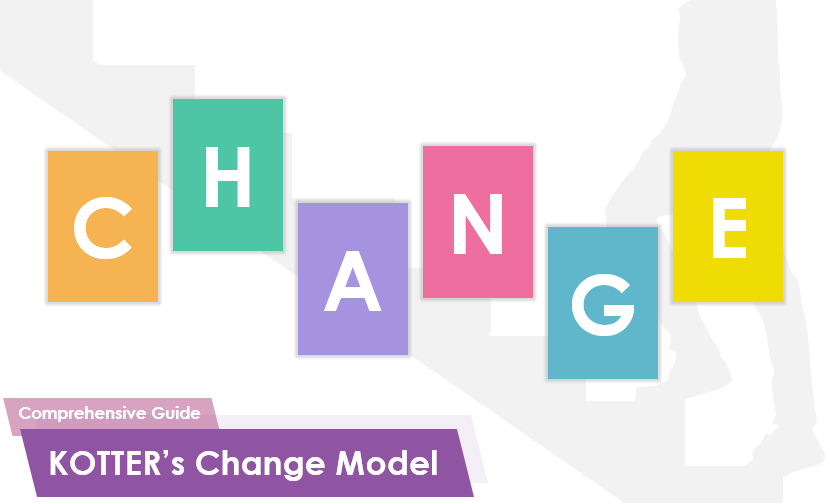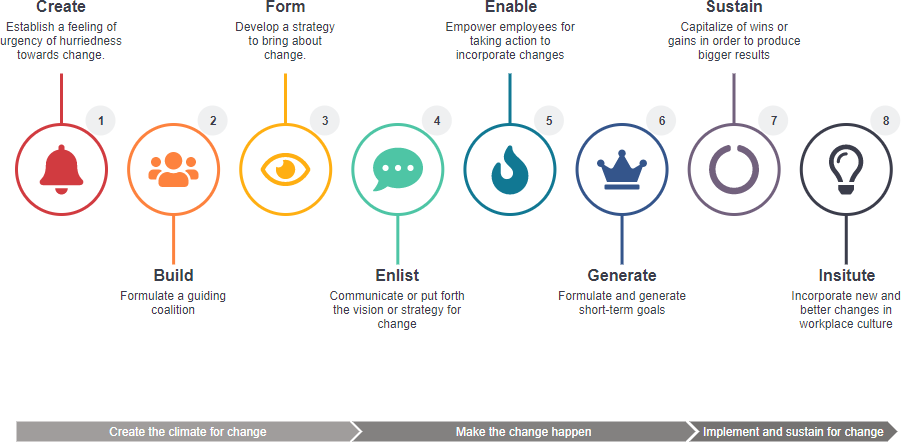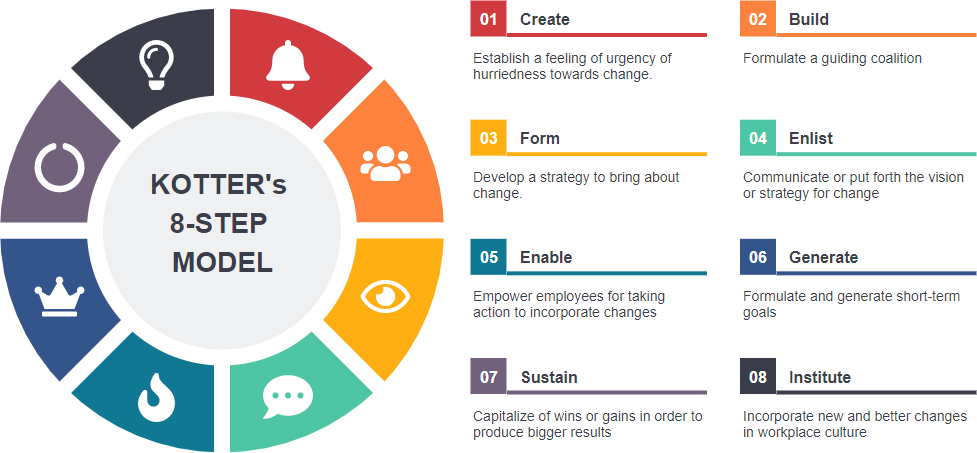We live in a world where “business as usual” is change. New initiatives, project-based working, technology improvements, staying ahead of the competition – these things come together to drive ongoing changes to the way we work. The major challenge facing modern business leaders is how to act quickly and remain relevant in highly competitive environments.

Change management is a collective term for all approaches to prepare, support, and help individuals, teams, and organizations in making organizational change. The most common change drivers include technological evolution, enhanced competition, client needs; pressure from new business entrants, acquisitions, and organizational restructuring. Change management includes methods that redirect or redefine the use of resources, business processes, budget allocations, or other modes of operation that significantly change a company or organization.

Kotter’s Change Model
John Kotter, a professor and change management professor at Harvard Business School, introduced his ground-breaking eight steps Change Model in his 1995 book, “Leading Change”. He argues that 70% of change initiatives fail, and attributes this to the fact that most organizations do not put in the necessary preparation or see the project through correctly.
Following the eight steps ensure your change initiative is more likely to be a long-term success. Built on the work of Kurt Lewin, the model sets out the 8 key steps of the changes process, the eight steps are summarized as follows:
- Create Urgency – Initiating an open and honest dialogue about the urgent need to change begins to build momentum and garners buy‐in for the change.
- Form a Powerful Coalition – Garnering leadership and visible support from influential individuals can mobilize more stakeholders. Influence may come from positional or informal influence.
- Create a Vision for Change – A clear vision ensures that people can understand the purpose of the change and the desired outcomes for the change. It makes the change more palatable and helps reduce the anxiety that emerges naturally from a change process.
- Communicate the vision – Take every opportunity to communicate this vision and link this vision to the purpose of the organization/unit/team to keep the vision top‐of‐
- Remove Obstacles – A change will encounter barriers (e.g., policies, procedures, silos, etc.) that stand in the way. These barriers will need to be tackled on a case‐by‐case basis to move the change effort forward.
- Create Short-Term Win – Early success is tools to combat change fatigue and reinforce momentum. They should be frequently and publicly recognized, collected and communicated.
- Build on the change – When sufficient momentum is built and early successes are visible, be relentless with the remaining aspects of the change until the vision is a reality.
- Anchor the Changes in Corporate Culture – Articulate the connections between the new behaviors and organizational success, making sure they continue until they become strong enough to replace old habits.
3 Stages of Kotter’s Change Model
The main reason that Kotter outlines these steps is to emphasize that change is not a simple and quick process. We can divide the change model into three stages for the change process:
- Creating a Climate for change
- Engaging and enabling the organization
- Implementation and sustaining the change
Many steps of planning and preparation are required, and even when the change has been implemented there is still a lot to do to ensure it is successful.

Edit this Kotter’s 8-Step Change template
Present Your Findings with Infographic Template

Edit this 8-Step change model template
